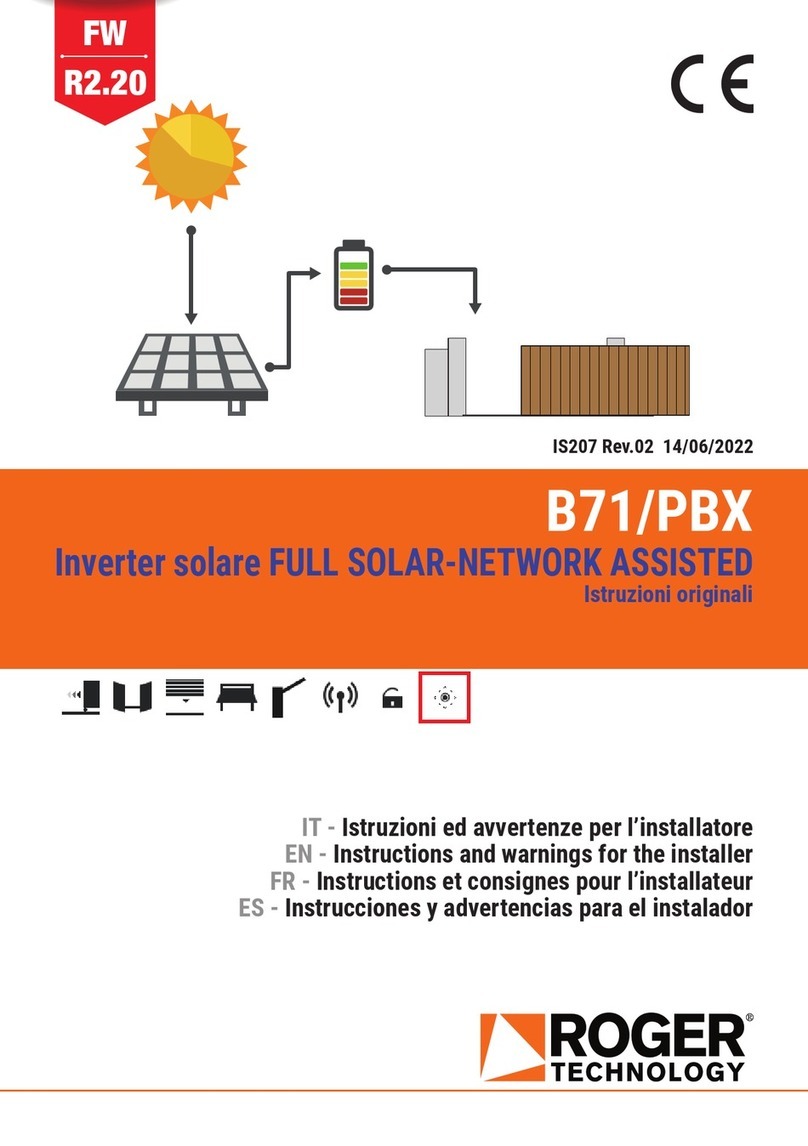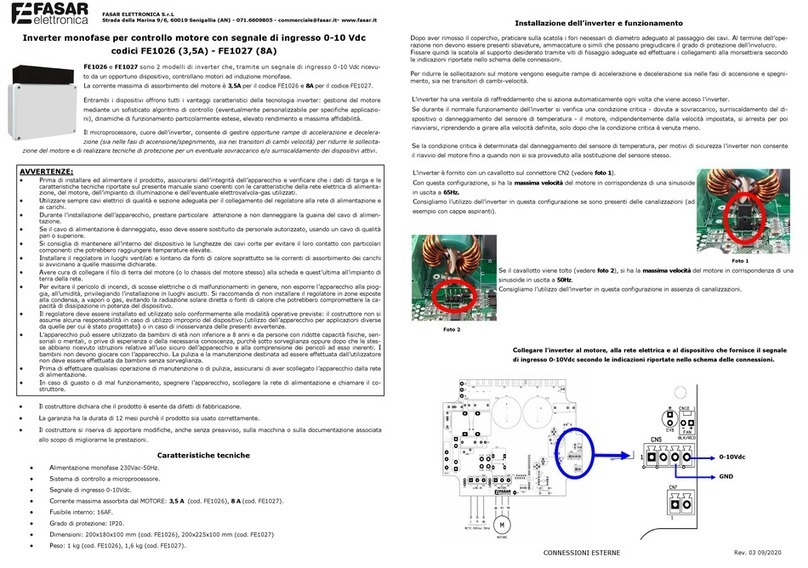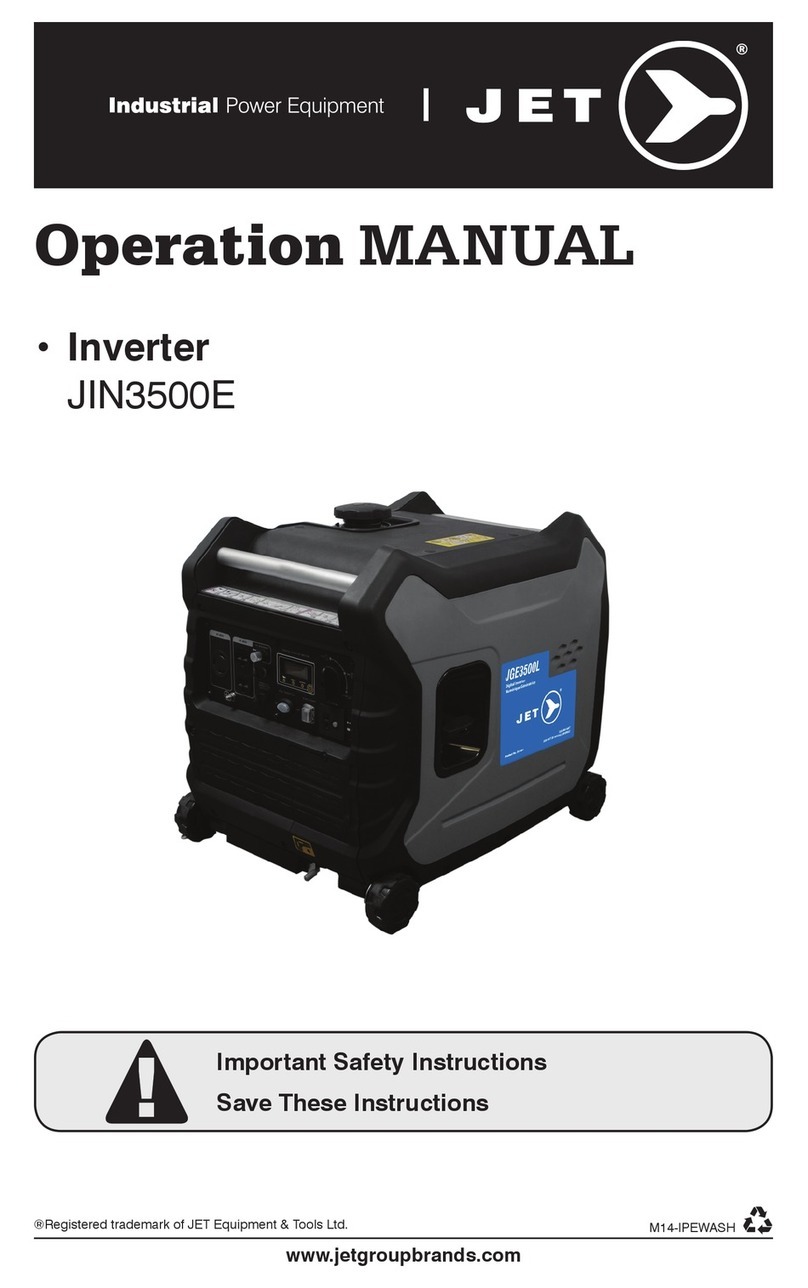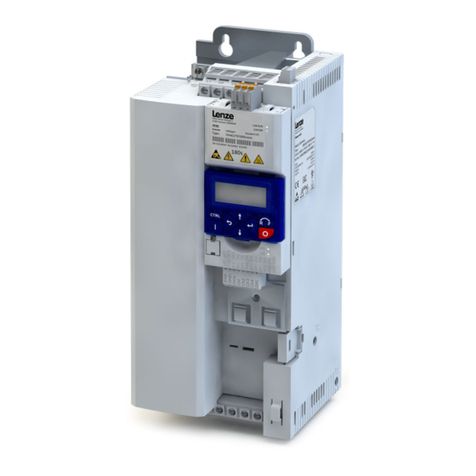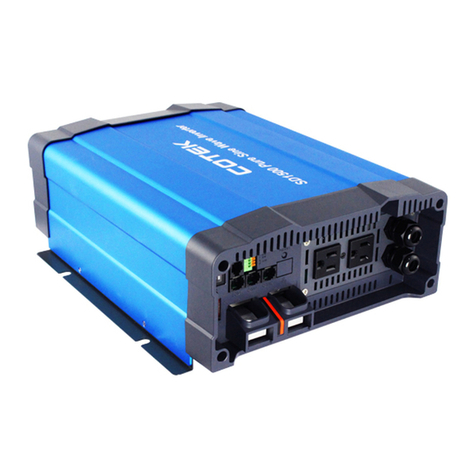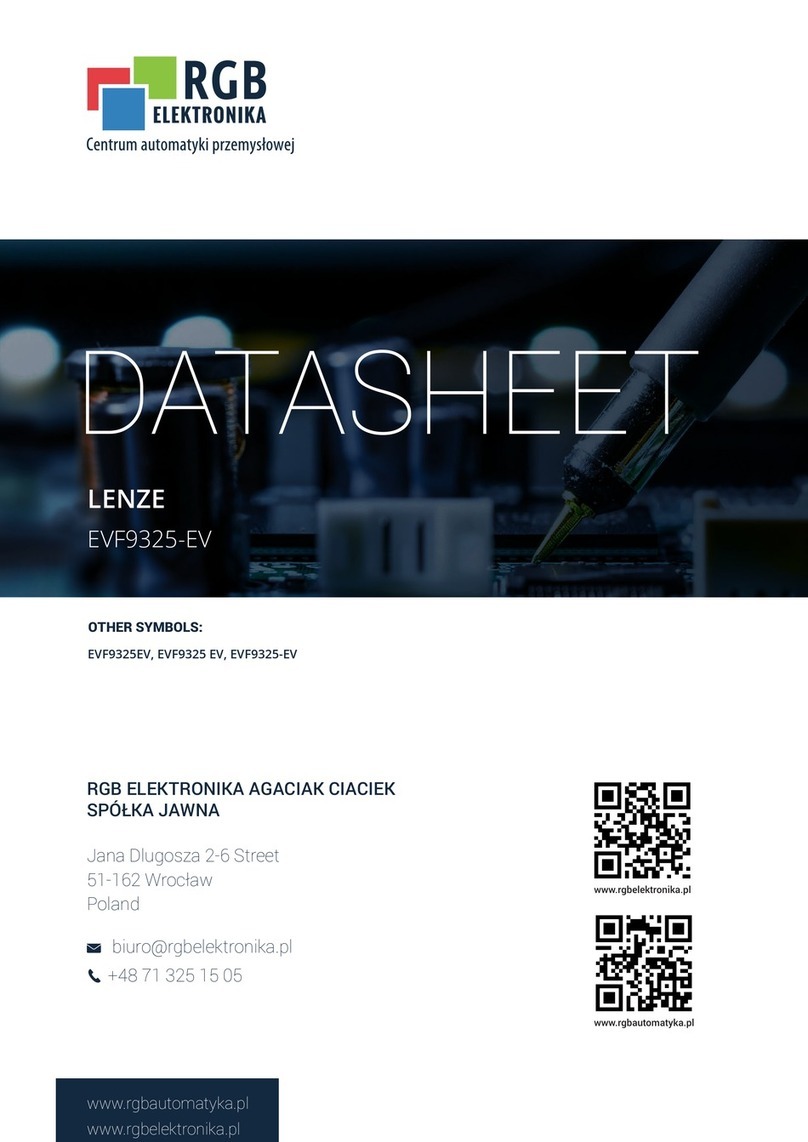Solaria PowerXT-R User manual

Safety and Installation instructions
© The Solaria Corporation. Contents subject to change without notice.
Document SPS-1006 Rev 02, April 25, 2017
SAFETY, INSTALLATION, AND OPERATIONS
MANUAL
FOR US INSTALLATIONS
Solaria PowerXT™-R Module
3 of 11

2 | Page
Safety and Installation instructions
© The Solaria Corporation. Contents subject to change without notice.
Document SPS-1006 Rev 02, April 25, 2017
SAFETY,INSTALLATION,AND OPERATIONS MANUAL
1.0 Introduction
This document provides safety and installation information for the Solaria
PowerXTTM residential solar modules.
Read this document before installing, wiring, or using this product. Failure to
comply with these instructions will invalidate the Solaria Limited Warranty and
may cause loss, damage or injury.
Limited Warranty
Module limited warranty is described in The Solaria Corporation PowerXTTM
Warranty. Warranty details may be found at www.solaria.com.
2.0 Safety Precautions
Before installing the modules, read all safety instructions in this document.
Modules produce direct current (DC) when exposed to light. Direct
current can arc across gaps and may cause injury or death if improper
connection or disconnection is made, or if contact is made with exposed
leads. Do not connect or disconnect modules when current from the
modules or an external source is present.
Do not operate the modules in a short circuit condition for extended
periods of time.
Do not artificially expose additional high intensity sunlight directly on the
module.
Do not disconnect modules while under load.
All installations must be performed in compliance with local, regional,
national and international statutory regulations, guidelines, norms and
code requirements.

3 | Page
Safety and Installation instructions
© The Solaria Corporation. Contents subject to change without notice.
Document SPS-1006 Rev 02, April 25, 2017
There are no user serviceable parts within the module. Do not attempt to
repair any part of the module.
Installation should be performed by authorized personnel only.
Use insulated tools to reduce risk of electric shock. Do not touch
terminals with bare hands.
Do not stand on, drop, or allow objects to fall on modules.
Do not install or handle modules when they are wet or during periods of
high wind.
Before installing your system, contact local authorities to determine
necessary permit, installation and inspection requirements.
Module support structures should be wind rated per local code and
approved for use by the local authorities.
2.1 FIRE RATING AND SAFETY
Solaria PowerXTTM residential solar modules are UL1703 fire type 1 rated
and certified by an independent third party testing laboratory.
Refer to your local authority for guidelines and requirements for building
or structural fire safety.
The roof construction and installation may affect the fire safety of a
building: improper installation may contribute to hazards in the event of
fire.
It may be necessary to use components such as earth fault circuit
breakers, fuses and circuit breakers.
Do not use modules near equipment or locations where flammable gases
can be generated or can collect.
Artificially concentrated sunlight shall not be directed onto the
module.

4 | Page
Safety and Installation instructions
© The Solaria Corporation. Contents subject to change without notice.
Document SPS-1006 Rev 02, April 25, 2017
3.0 ELECTRICAL INSTALLATION
Caution: Avoid all electrical hazards when installing, wiring, operating,
and maintaining a module or module array.
Refer to Section 2 for more information.
The system must be installed, commissioned and maintained by a
licensed electrician unless local electrical codes determine otherwise.
Contact with DC voltage is potentially hazardous.
Do not use modules of different electrical or physical configurations in
the same DC string or inverter.
Series Connection: The modules may be wired in series to produce the
desired voltage output. Do not exceed the maximum system voltage
indicated on the module label.
Parallel Connection: The modules may be combined in parallel to produce
the desired current output provided that each series string or module is
fused prior to combining with other strings. The maximum fuse size
allowed is noted on the module label.
Connection cables and wiring shall be supported with plastic or rubber
cable ties and clips to the module support structures. Metal clips
specifically designed to be used in solar applications are allowed when
used in accordance with the manufacturer’s instructions. Module junction
boxes and metal cable ties should not be used to support cables and
wiring.
Under normal conditions, a photovoltaic module is likely to experience
conditions that produce more current and/or voltage than reported at
Standard Test Conditions (STC). The requirements of the National
Electrical Code (NEC) in Article 690 shall be followed to address these
increased outputs. In installations not under the requirements of the
NEC, the values of Isc and Voc marked on this module should be
multiplied by a factor of 1.25 when determining component voltage
ratings, conductor capacities, fuse sizes, and size of controls connected
to the PV output.
Refer to section 690-8 of the National Electric Code (NEC) for additional
multiplying factor of 125% (80% de-rating), which may be applicable.

5 | Page
Safety and Installation instructions
© The Solaria Corporation. Contents subject to change without notice.
Document SPS-1006 Rev 02, April 25, 2017
All Solaria modules are equipped with factory locking connecting cables.
Modules have been designed to be easily connected. The locking
connectors are not to be disconnected under load. The proper
procedure to disconnect the module locking connectors is as follows:
Turn off the inverter(s), shut off the module DC disconnect(s) and then
disconnect the locking connectors using an approved tool set. To re-
install, connect the module locking connectors, turn on the module DC
disconnect(s) and turn on the inverter(s).
Match the polarities of the cables and terminals when making
connections; failure to do so may result in damage to the modules and
other electrical equipment.
A properly rated and certified over-current device must be connected in
series with each module or string of modules when reverse currents can
exceed the value of the maximum protective fused value noted on the
module label. The rating of the over-current device shall not exceed the
value of the maximum protective fuse rating specified on the module
label.
All Solaria modules are factory supplied with bypass diodes located in the
junction box. These diodes protect the shaded cells within a module.
Partial shading of a single module in a string of modules causes reverse
voltage across the shaded cells. This results in current being forced
through the shaded cells causing module heating and severe power loss.
The bypass diodes provide a low-resistance current path through the
shaded cells thus minimizing module heating and array current loss.
The junction box is not designed or certified to be field accessible or
maintainable and should under no circumstances be opened. Opening the
junction box may void the module warranty.

6 | Page
Safety and Installation instructions
© The Solaria Corporation. Contents subject to change without notice.
Document SPS-1006 Rev 02, April 25, 2017
3.1 Grounding (Grid-tied applications)
Before installing your solar system, contact local authorities to determine
the necessary system hardware grounding requirements.
Module frames should be electrically connected to an earth ground for
safety and protection from lightning in accordance to the National Electric
Code (NEC). Refer to NEC article 250 on grounding PV arrays for specific
requirements.
Solaria PowerXT residential solar modules may be installed on a mounting
system certified to UL 2703 with approval of the mounting system
manufacturer.
When using a mounting system, grounding of modules must be
accomplished by the method prescribed by the mounting system
manufacturer.
Where common grounding hardware (nuts, bolts, star washers, split-ring
lock washers, flat washers and the like) are used to attach the solar
module to a listed grounding/bonding device, the attachment must be
made in conformance with the grounding device manufacturer’s
instructions.
Common hardware items such as nuts, bolts, star washers, lock
washers, and the like have not been evaluated for electrical
conductivity or for use as grounding devices and should be used
only for maintaining mechanical connections and holding electrical
grounding devices in the proper position for electrical conductivity.
Such devices, where supplied with the module and evaluated
through the requirements in UL1703, may be used for grounding
connections in accordance with the instructions provided with the
module.
Follow these instructions to ground the module.
The module frame has four 4.5 mm grounding holes shown on the
module label. Attach a 10 AWG (2.588 mm diameter) bare copper
ground conductor to a grounding lay-in lug mounted at one of the
four grounding holes on the module frame. Use a grounding lug
such as the ILSCO GBL-4DB with tin plating and stainless steel

7 | Page
Safety and Installation instructions
© The Solaria Corporation. Contents subject to change without notice.
Document SPS-1006 Rev 02, April 25, 2017
hardware (#10-32 hex head screw at 4 mm diameter, flat washers,
tooth lock washer and nut).
A #10 flat washer must be used between the screw head and the
grounding lug to prevent damage to the tin plating on the lug.
Insert a #10 flat washer between the grounding lug and the module
frame. A #10 tooth lock washer must be inserted between the nut
and the module frame to break the anodized layer of the frame.
This mechanical bond between the tooth lock washer and the frame
of the module will ensure a good electrical bonding path.
The #10-32 assembly attachment screw must be tightened between
20-25 inch-pound. A 10 AWG bare copper ground conductor must
be attached to the ground lug using the stainless-steel set screw
provided by the lug manufacturer. Tighten the set screw between
10-15 inch-pound to ensure a strong mechanical and electrical
bond.
Recommended stainless steel hardware, grounding lug and
assembly:
3.2 Non Grid-Tied Applications
Contact Solaria for appropriate grounding guidelines.
Stainless-steel hardware (McMaster-Carr Part Numbers):
#92314A831 ¾” long #10-32 hex headed screw
#91841A195 #10-32 hex nut
#98438A230 #10 tooth lock washer
#90107A011 #10 flat washer

8 | Page
Safety and Installation instructions
© The Solaria Corporation. Contents subject to change without notice.
Document SPS-1006 Rev 02, April 25, 2017
4.0 Module Mounting
The Solaria Corporation PowerXTTM Warranty is contingent upon modules being
mounted in accordance to the requirements described in this section.
4.1 Site Considerations
Solaria modules should be mounted in locations that meet the following
requirements.
Module should not be mounted in locations where it will be in direct
contact with salt water.
When choosing a site, avoid obstructions that could cast shadows on the
modules.
4.2 Mechanical Installation
Solaria module mounting configurations must meet the following requirements:
For most installations, including rooftop and tracker installations,
modules should be secured with bolts or PV module specific clamps at
the four outermost 7 mm mounting hole locations on the frame (refer to
the holes marked “B” on the module diagram shown in Section 8).
When using bolts, use M6 (1/4″-20)stainless steel bolts, with nuts,
two washers, and a locking washer, tightened to a minimum torque
of 13.6-16.3 N∙m (10-12 ft∙lb).
When using clamps, follow the manufacturers recommended
hardware and torque requirements for solar installations. Various
clamp systems specifically designed for PV module mountings are
available and compatible with Solaria PowerXT modules. Solaria
recommends stainless steel clamps of 40 mm (1.57”) minimum.
Structural rails supporting the bolted or clamped connections should run
perpendicular to the length of the module.

9 | Page
Safety and Installation instructions
© The Solaria Corporation. Contents subject to change without notice.
Document SPS-1006 Rev 02, April 25, 2017
Do not remove or alter the module frame. Creating additional mounting
holes may damage the module and reduce the strength of the frame.
The Solaria modules must be mounted using industry standard ground
mount hardware roof mount hardware, or single and dual axis PV
trackers. If other mounting means are employed, then product
certification or fire class ratings may be affected.
For roof mounting, the modules should be mounted over a fire-resistant
covering rated for the application.
Clearance of 7 mm or more between modules is required to allow for
thermal expansion of the frames.
Clearance of 100 mm or more is recommended between the modules and
the rooftop or nearest surface.
Always keep the back surface of the module free from any foreign objects
or structural elements which could come into contact with the module.
Ensure that the modules are not subject to wind or snow loads in excess
of the maximum permissible loads and are not subject to excessive
forces due to thermal expansion of the support structure.
Modules have been tested to Mechanical Loading Test requirements of
UL1703.
The fire rating of this module is valid only when mounted in the manner
specified in the mechanical mounting instructions.
The module is considered to be in compliance with UL1703 only when the
module is mounted in the manner specified by the mounting instructions.
A module with exposed conductive parts is considered to be in
compliance with UL1703 only when it is electrically grounded in
accordance with the instructions presented in this document and the
requirements of the National Electrical Code.
Any module without a frame (laminate) shall not be considered to comply
with the requirements of UL1703 unless the module is mounted with
hardware that has been tested and evaluated with the module under this
standard or by a field inspection certifying that the installed module
complies with the requirements of UL1703.

10 | Page
Safety and Installation instructions
© The Solaria Corporation. Contents subject to change without notice.
Document SPS-1006 Rev 02, April 25, 2017
4.3 Module Direction and Tilt Angle
Modules produce maximum energy when they are pointed directly to the
Sun. Modules get maximum sunlight throughout the year if they face
South in Northern Hemisphere and they face North in Southern
Hemisphere.
When mounted on a single axis tracker, modules may be tilted or kept
horizontal. Tilting will produce more annual energy.
4.4 Module Orientation
Horizontal Single Axis Tracker: Modules can be mounted in either
“portrait” or “landscape” orientation on a tracker. For best performance,
the axis should be aligned with the North-South direction. If the axis is
not aligned with the North-South direction, it is critical that the controller
of the tracker corrects for this misalignment.
5.0 Maintenance
Solaria modules are virtually maintenance free. Following simple maintenance
steps will ensure reliable production of DC electric power for the expected life
of the product.
Inspect electrical and mechanical connections for safety and corrosion at
least once every year.
Under most weather conditions, normal rainfall is sufficient to keep the
module glass surface clean.
Modules that are mounted at a small tilt angle will not self-clean as
easily as modules that are mounted at large tilt angles. If dirt build-
up becomes excessive, clean glass surface with water and soft
cloth. Do not use harsh cleaning materials.
Cleaning the back surface of the module is not necessary for proper
operation. Should it be deemed necessary to clean the back surface,
avoid penetrating the back sheet.

11 | Page
Safety and Installation instructions
© The Solaria Corporation. Contents subject to change without notice.
Document SPS-1006 Rev 02, April 25, 2017
6.0 Disclaimer of Liability
Since the use of this Safety, Installation and Operation Manual and the
conditions or methods of installation, operation, use and maintenance of
the module are beyond The Solaria Corporation control, The Solaria
Corporation does not assume responsibility and expressly disclaims
liability for loss, damage, injury or expense arising out of or in any
connection with such installation, operation, use or maintenance of the
module.
The Solaria Corporation assumes no responsibility for any infringement
of patents or other rights of third parties that may result from the use of
the module. No license is granted by implication or otherwise under any
patent or patent rights.
The information in this Manual is based on The Solaria Corporation
knowledge and experience and is believed to be reliable; but such
information, including the product specifications (without limitations) and
suggestions, do not constitute a warranty, expressed or implied. The
Solaria Corporation reserves the right to make changes to the product
specifications or this manual without prior notice.
This document may be provided in multiple languages. If there is a
conflict among versions, the English language version dominates.

12 | Page
Safety and Installation instructions
© The Solaria Corporation. Contents subject to change without notice.
Document SPS-1006 Rev 02, April 25, 2017
7.0 Electrical Specifications
ELECTRICAL PARAMETERS
Peak Power, Pmax (Watts)
330
Open Circuit Voltage, Voc (V)
44.5
Short Circuit Current, Isc (A)
9.49
Voltage at Pmax (V)
36.6
Current at Pmax (A)
9.2
Max Series Fuse Rating (A)
15
UL Max System Voltage (V)
1000
TEMPERATURE SPECIFICATIONS
Coefficient of Power
-0.40 %/°C
Coefficient of Voltage
-0.32 %/°C
Coefficient of Current
+0.05 %/°C
Specified power rating is +3/-2% of indicated value of Pmax under STC*
All other electrical specifications are ± 10% of indicated values under
STC*
*STC: Irradiance 1000 W/m2, AM 1.5 spectrum, Cell Temperature 25 °C
Module is rated for Application Class A

13 | Page
Safety and Installation instructions
© The Solaria Corporation. Contents subject to change without notice.
Document SPS-1006 Rev 02, April 25, 2017
8.0 Mechanical Dimensions
Module Weight: 20.1 kg (44.31 lbs.)
Nominal dimensions in millimeters and [inches] – Not Drawn to Scale

Safety and Installation instructions
© The Solaria Corporation. Contents subject to change without notice.
Document SPS-1006 Rev 02, April 25, 2017
Solaria USA
6200 Paseo Padre Pkwy
Fremont, CA 94555
United States of America
T: +1-510-270-2500
www.solaria.com
Table of contents
Popular Inverter manuals by other brands
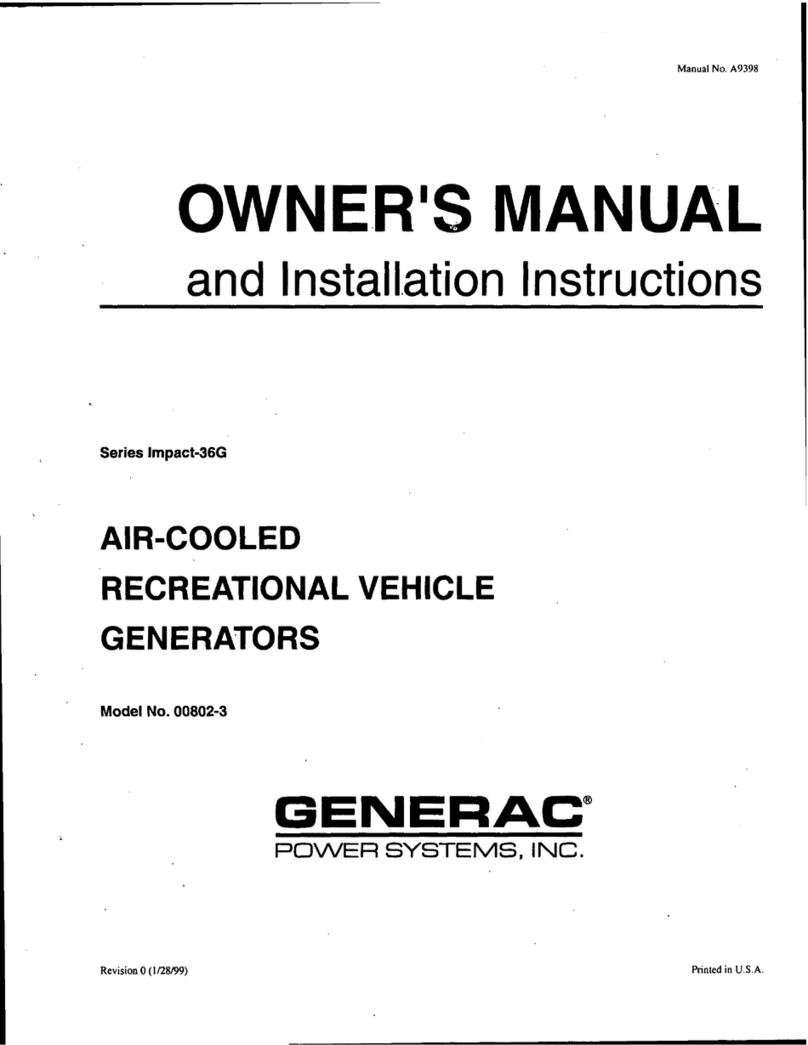
Generac Power Systems
Generac Power Systems 00802-3 Installation and owner's manual
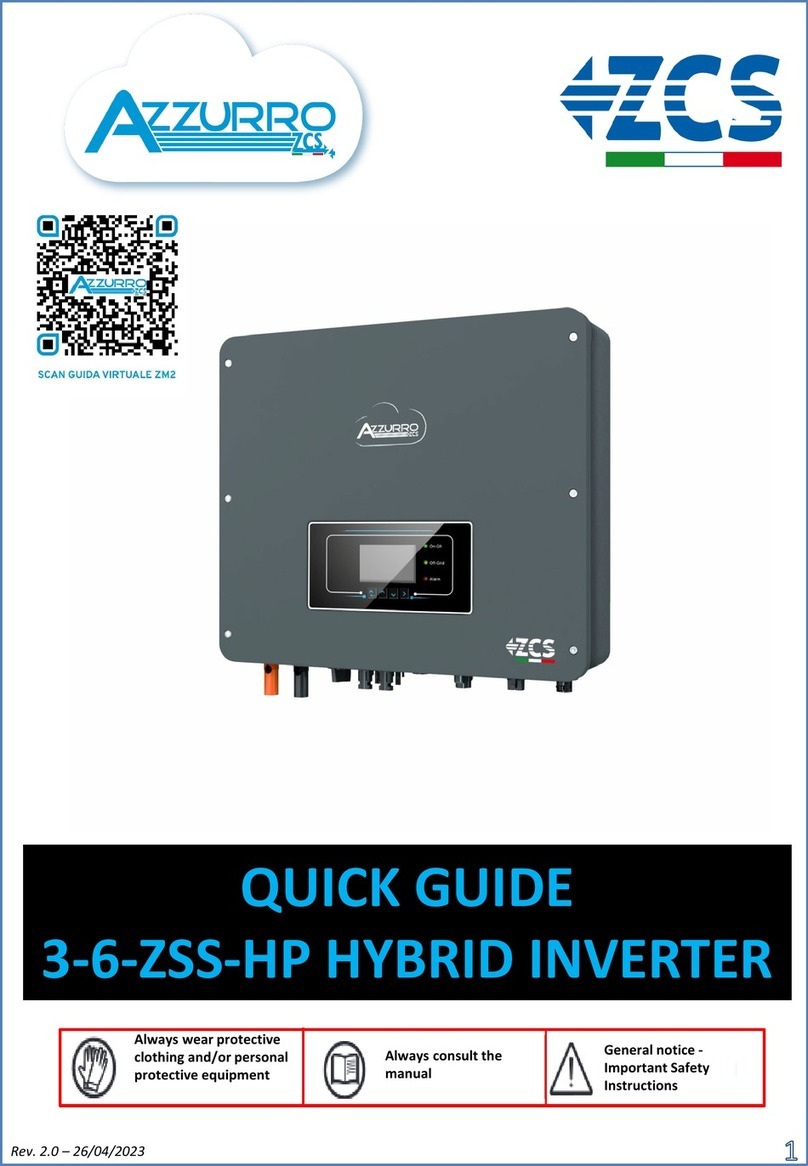
ZCS
ZCS AZZYRRO 3-6-ZSS-HP quick guide
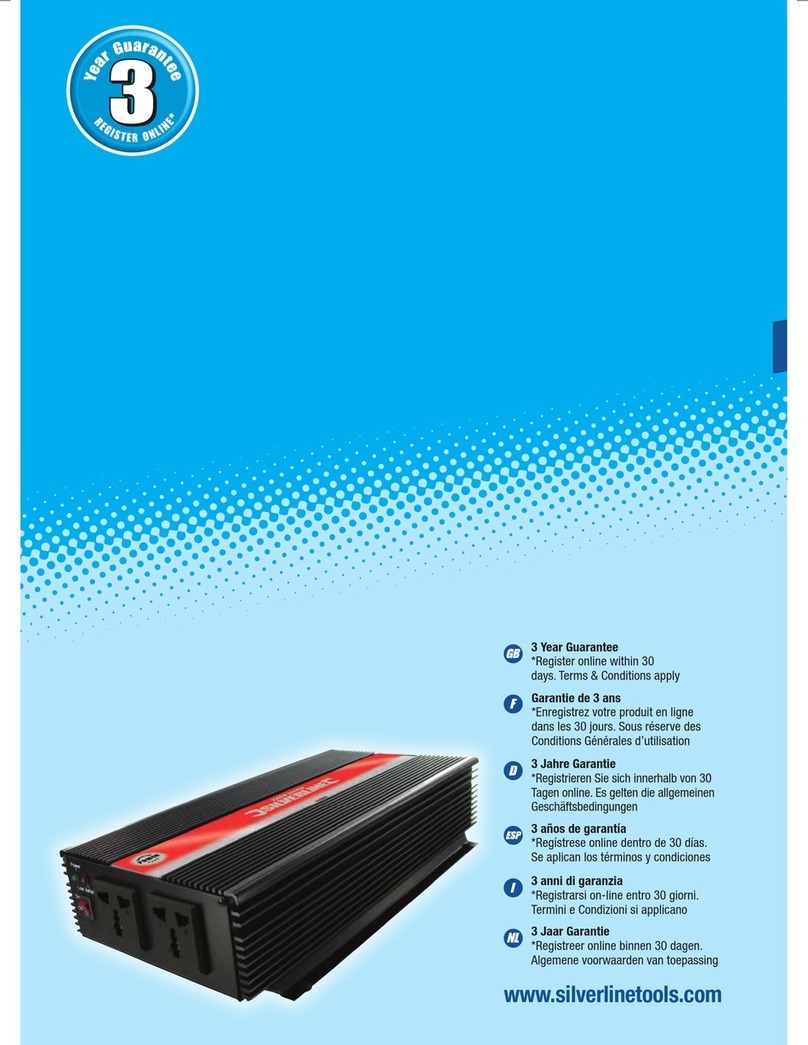
Silverline
Silverline 444658 user manual
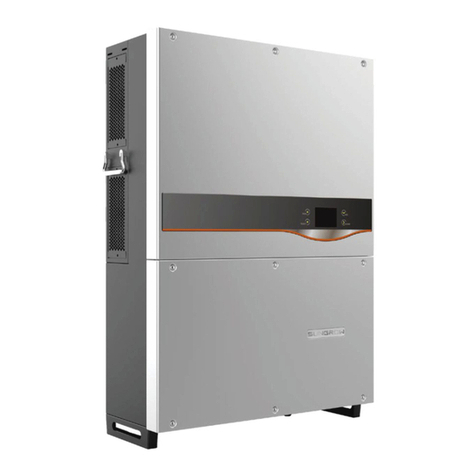
Sungrow
Sungrow SG50KTL-M installation guide
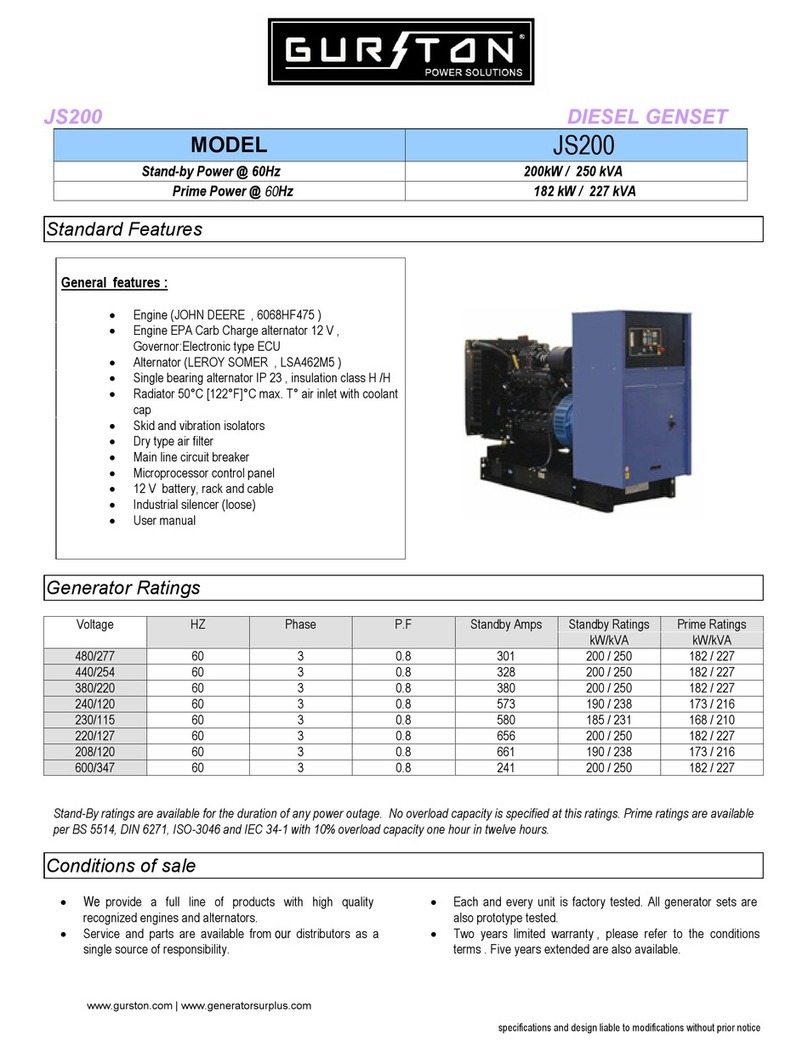
Gurston power solutions
Gurston power solutions JS200 Specifications
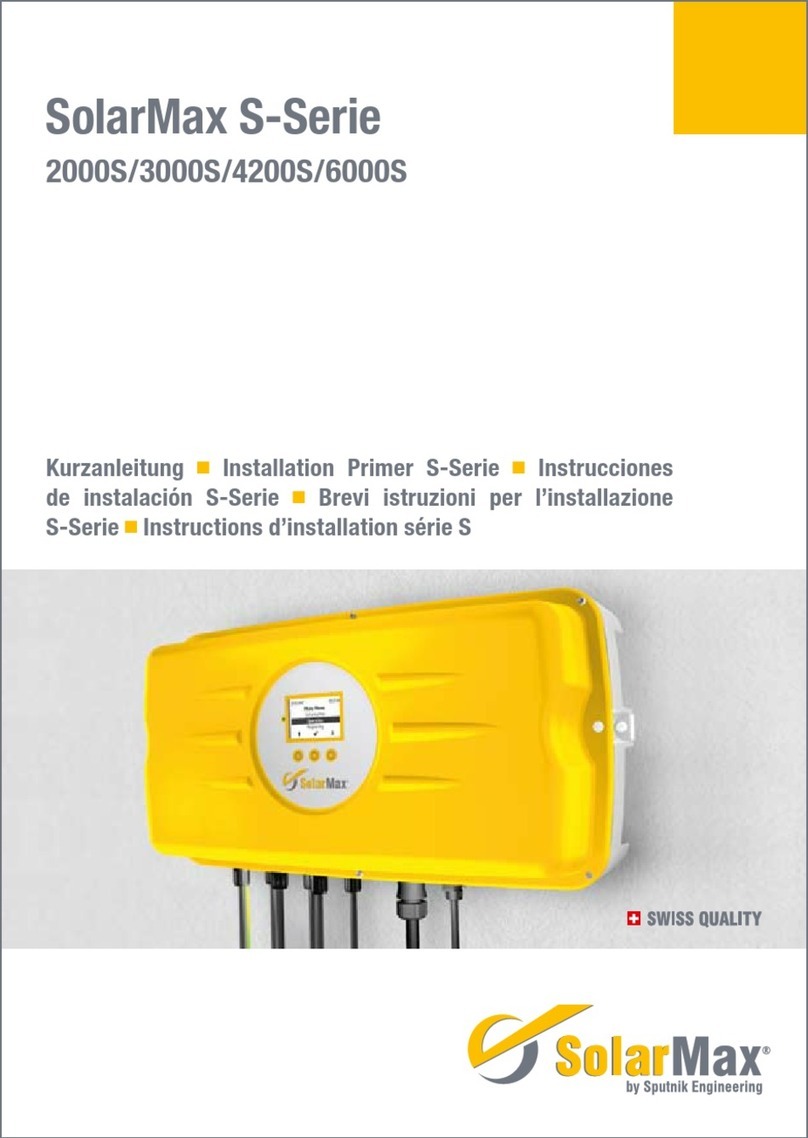
Sputnik Engineering
Sputnik Engineering SolarMax S Series installation instructions
